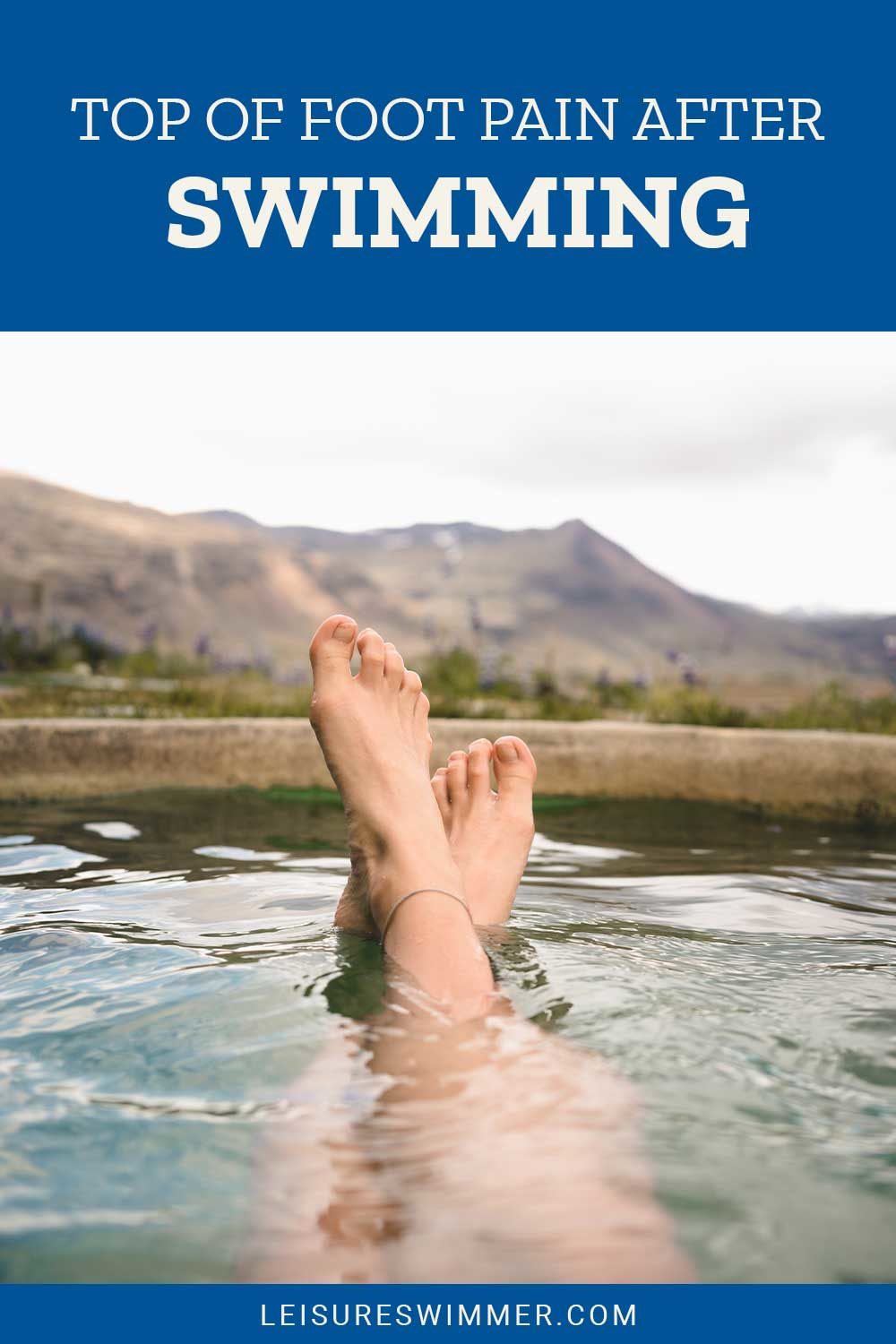Top Of Foot Pain After Swimming
We may earn commissions for purchases made through links on our site. Learn more on our about us page.
Swimming is a good exercise that can work out the body, build up muscles, and burn fat. But unfortunately, because it does work so many muscles at once, it can also lead to numerous injuries.
One common injury is pain in your feet. When you look around, you may experience an injury in the tendon or ankle being the most common, but that isn’t all.
Experiencing pain on the top of your foot is also an injury that occurs. It isn’t common, but it can happen due to injury, cramps, and muscle strain.
Thankfully, there are ways you can take precautions to make sure your feet stay healthy and don’t get injured during your exercises so you can keep swimming.

Is This Normal?
If the top of your feet hurt after swimming, don’t worry too much. While it isn’t very common, it also isn’t rare or unusual. Cramping is the most common cause of pain focused at the top of your feet after swimming.
Cramping occurs most often after freestyle kicks or if you are trying to turn directions. Usually, this pain will be short and sharp and feel like a muscle spasm.
The most common cause of muscle cramping is working your muscles too much or lack of water and necessary electrolytes.
Pain can radiate, however. For that reason, make sure that the pain is actually coming from the top of your foot, or else it could be something like tendonitis.

What if it Happens Often?
If it happens often, it is probably because you are chronically dehydrated. This is a common problem because when people swim in the water, they sometimes don’t realize how dehydrated you are. Or, you drink too much water and don’t get the electrolytes you need.
Look at bringing an electrolyte drink during your next swim. There are labeled sports drinks in many stores, but you can also get powders to mix into water or even coconut water.
Another common problem when your feet constantly hurt is improper swimming techniques. If you aren’t kicking as you should or have the wrong timing, you may be working your muscles too hard, and that can lead to cramping.
Can You Stop it?
It is possible to stop your foot from cramping. For starters, find workouts that stretch the muscles in your feet. This allows you to make sure your muscles are strong and ready to handle a swim.
Also, you will want to make sure that you are doing your swim properly. Have someone check you to see if you are swimming incorrectly or kicking at the wrong time.
You can do that by having someone watch you or record yourself swimming to see if you can catch any mistakes.
Finally, always bring water and electrolytes with you. Whether you take a powder, a supplement, or an energy drink, there are many options out there. Electrolytes are important for reducing and preventing both cramps and headaches.
What is a Swimmers Foot?
A swimmer’s foot, also known as swimmer’s toes, is in a pretty crazy condition. In medical terms, it is called Swimmer’s xerosis, and it involves a dermatitis of the skin that involves dryness, itching, and scaling on the skin of the toes and feet.
This usually happens in the winter months, when the air is already dry. Additionally, taking hot showers after a swim can make the symptoms worse. It doesn’t seem to matter much if the swimmer is swimming in pools, freshwater, or saltwater.
The water quality doesn’t seem to matter much either, nor does the person’s age. Children and the elderly have both shown up with the symptoms. Some of these cases have even come from private pools at homes.
Can You Prevent Food Pain?
You can take a few steps to prevent any issues with your feet. The first is to keep pool socks, flip-flops, or water shoes.
You can put them on when you are done swimming or taking a break and walking around. This protects your bare feet from interacting with anything on the ground, concrete, or soil that may harm your feet.
Additionally, you want to stretch before swimming every time. This works out the muscles and ensures that your feet are ready for a lot of work.
Finally, make sure you have the right technique and the right form. This reduces the strain on your muscles and the chance that you will injure your feet or muscles when swimming.
Final Thoughts on Top Of Foot Pain After Swimming
Swimming is a great exercise but has a high risk of injury. Foot injuries are pretty common when swimming, as well as cramping. Thankfully, by keeping your electrolytes up and staying hydrated, you can reduce the chances of cramping.
As for injury, ensuring that your feet are stretched out and that you have some sort of foot covering to slip onto your feet when you are walking around can reduce injury from straining the muscle or stepping on anything that could cause damage.
Don’t forget to take care and always work on your technique. Swimming improperly can cause injury to your muscles and your feet as well if you aren’t careful.


